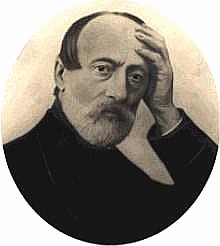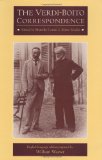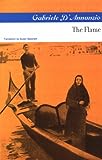risorgimento and decadence
a quick history of italian literature
By Roberto Simmarano

 The literature of the Risorgimento
The literature of the Risorgimento
The romantic movement in Italy was not the complex cultural revolution that it was in other European countries.
It did coincide however with the nationalistic liberalism of the Risorgimento and gave rise to a richness
of didactic and historical writing. The two most notable schools are the Catholic-liberal, moderate and reformist,
represented by Vincenzo Gioberti and a more democratic, radical and revolutionary one represented by Giuseppe Mazzini.
Memoirs in the form of Romantic autobiographical confession (Pellico, Nievo, Settembrini, Abba); lyric, often
sentimental poetry (Prati, Aleardi); sincere patriotism (Berchet, Mameli) and satirical poetry in dialect (Porta,
Giusti) also enjoyed some measure of literary success.
 The Scapigliatura movement
The Scapigliatura movement
The principal characteristics of the Scapigliatura movement of the mid-19th century
were a deep-rooted aversion to the sentimentalism and conformism of late Romanticism and
a conviction that the only valid subject of poetry was "truth". In the end, however, the group (Arrigo Boito,
Emilio Praga, Iginio Ugo Tarchetti and Giovanni Camerana as well as the painters Daniele Ranzoni and Tanquillo Cremona)
failed to create a new poetic movement and remained purely avant-garde writers in revolt, in both life and art, against
middle-class conformism, "official" literature, the patriotism of the Risorgimento and all other forms of social
and literary convention.
Giosue' Carducci (1835-1907)
The return to the Classical tradition characteristic of the latter half of the 19th century was in itself the reaction
against the sentimentalists of late Romanticism and the primary example of this tardy and nostalgic Neoclassicism is
supplied by the work of Giosuè Carducci, the great literary figure of the age and winner of the Nobel Prize in 1906.
The prevailing inspiration of Carducci's poetry was Classical myth which concurred with his own beliefs in the dignity of
Man, in moral strength and heroism, a vigorous outlook on life and a love for the beauty of Nature. Carducci also
believed that his talents licensed him to embark on a political mission.
 Realism
Realism
The second half of the 19th century saw the rise of a realist tendency in Italian literature created by the
reaction against Romantic idealism. The Realist movement proposed an objective, scientific analysis of society and
the psychology of the individual, detached from any personal, emotional or ideological intrusion from the
author. The master of Realism was
Giovanni Verga (1840-1922) whose novels, particularly I Malavoglia, describe the
dismal world of the dispossessed and wretched in Sicily, oppressed by a symbolic adverse Fate. Luigi Capuana
(1839-1915), Federico de Roberto (1866-1927) and Grazia Deledda (1871-1936), Nobel Prize winner in 1926, can also be
considered as members of the group.
Antonio Fogazzaro (1842-1911)
"Decadent" literature was the reaction against the excessive rational positivism which led to extremes of irrationality
typical of Romanticism and the first important Italian exponent of the Decadence was Antonio Fogazzaro. His work
displays a lyric-subjective style in which a sense of the mysterious is combined with suggestions of the subconscious,
sensuality is put against the author's deep religious sense, and arcane, ineffable spiritual experiences are sought.
These trends can be seen in the two major novels Piccolo Mondo Antico and Malombra.
Giovanni Pascoli (1855-1912)
Together with D'Annunzio and Fogazzaro, Giovanni Pascoli is representative of the spiritual unrest and decadent taste
typical of late 19th-century Italian literature. Pascoli had a deep personal involvement in the crisis of the times, the
tensions arising from social change and the loss of faith in science. Constant traits in his poetry are an escape from
reality through history, a regression to infancy and a concept of Nature as Man's only salvation. His philosophy
was based on the knowledge that the truth of being can be reached only through poetry. Poetry therefore becomes a
supreme form of knowledge, a mystic revelation that can be attained only by keeping the spirit in a form of childlike
awe before the world's mysteries.
 Gabriele D'Annunzio (1863-1938)
Gabriele D'Annunzio (1863-1938)
The most complete expression of the Decadence in Italy is supplied by the life and works of Gabriele D'Annunzio. He
explored aesthetic mysticism and the irrational, linking them to his own naturalistic and sensual feeling. Abandoning
reason as a means for knowledge, D'Annunzio gave himself up to instinct and the senses, seeing in them the way to deeper
life and the mysteries of the ego which were at one with the secrets of nature. The passionate verve of his emotions was
given ample voice through a variety of form, technical innovation and an evocative and original use of language.
These can be seen both in his novels (Il Piacere, L'Innocente, Il Fuoco) and in his collections of poems
(Laudi, Canto novo).
The Crepuscolari
Early 20th-century thought was characterized by a deep anxiety, a sense of insecurity caused by the loss of faith
in positivism, in science and in reason. The Crepuscolari (poets, as it were, of a disenchanted twilight) gave
expression to this prevailing literary climate of tiredness, spiritual exhaustion, disillusion, withdrawal and general
rejection of contemporary political, social and cultural problems. The poet to voice this languid melancholy most
clearly was Guido Gozzano (1883-1916) whose permanence lies in his skillful use of a simple and colloquial poetic
language.
This series of articles will close next month with a review of Contemporary Authors










